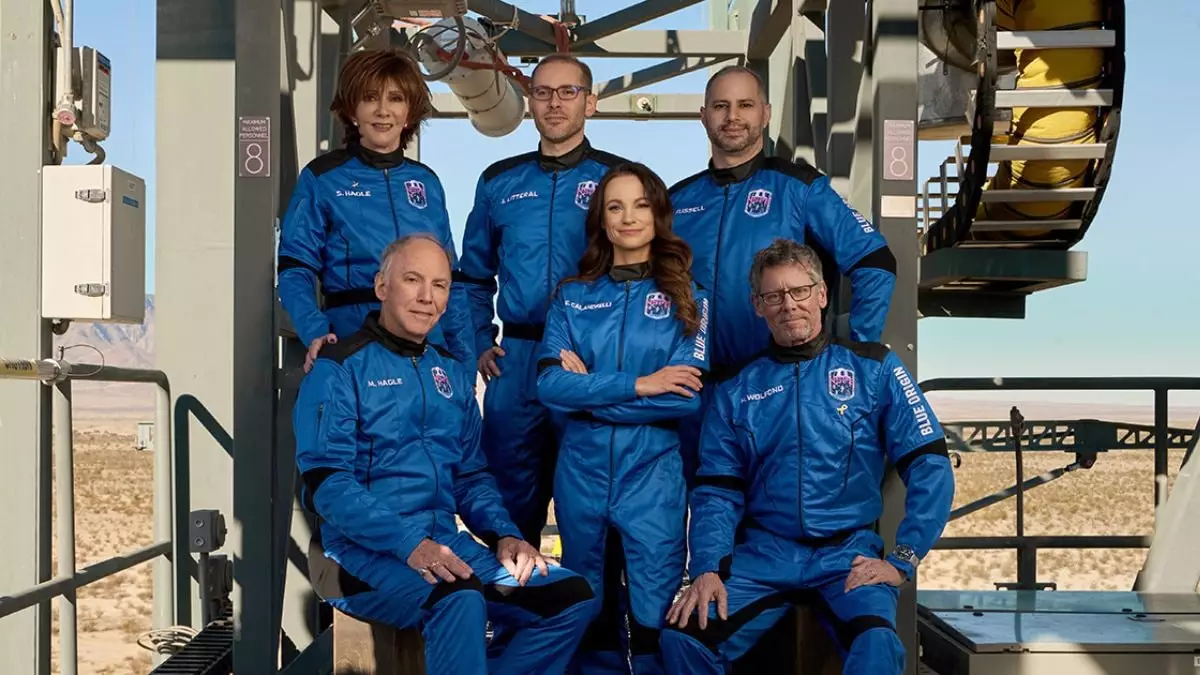On November 22, 2024, a significant milestone was marked in the realm of aerospace and gender representation as Emily Calandrelli became the 100th woman to journey into space. This historic flight, carried out aboard Blue Origin’s New Shepard rocket, was not just a personal achievement for Calandrelli but a transformative moment for women aspiring to break barriers in science, technology, engineering, and mathematics (STEM). The mission, dubbed NS-28, launched from Blue Origin’s West Texas facility and reached a peak altitude of 106 kilometers, crossing the Kármán line which designates the edge of outer space.
During the ten-minute suborbital journey, the six civilian tourists experienced about four minutes of weightlessness, providing them with unforgettable views of the Earth from above. Joining Calandrelli were Marc and Sharon Hagle, who were returning for a second adventure, Austin Litteral, a sponsored participant, J.D. Russell, an entrepreneur, and Hank Wolfond, a CEO from Canada. Each of these passengers added to the diverse tapestry of people embarking on what was Blue Origin’s ninth human spaceflight, showcasing an ever-expanding enthusiasm for space exploration among civilians.
Known affectionately as “The Space Gal,” Emily Calandrelli has tirelessly advocated for increased representation of women in STEM fields. She emphasized that her historic journey was not merely the culmination of her aerospace engineering studies, but a mission aimed at inspiring young girls to pursue careers in these critical fields. In the spirit of honoring those who paved her way, Calandrelli carried a personal tribute—a photo montage celebrating the 99 women who had ventured into space prior to her. This gesture highlighted not only her respect for their contributions but also the gradual evolution of women’s roles in space exploration and science.
The mission’s logo featured a figure in pink overalls, symbolizing Calandrelli’s achievement as well as her commitment to broadening the horizons for future generations of female scientists and engineers. Upon her return, she described the experience as profoundly emotional—her awe likened to the moment she witnessed the birth of her children. Such powerful reflections underscored the personal significance of this journey while evoking a broader narrative of resilience in the face of adversity that many women have encountered in these fields.
Calandrelli’s venture does more than mark a personal triumph; it contributes to a larger movement aimed at democratizing access to space, especially for women. The seat she occupied aboard the “RSS First Step” was partly funded through a network of sponsors, further demonstrating the collaborative efforts necessary to make such groundbreaking events happen. As of this flight, 714 individuals have achieved the remarkable feat of reaching outer space, and Calandrelli’s presence among them serves as a beacon of hope and encouragement for aspiring scientists globally.
Emily Calandrelli’s journey to space stands not only as a personal milestone but also as a monumental chapter in the broader narrative of women’s representation in aerospace. Her commitment to inspiring young girls in STEM reveals that while individual accomplishments may shine, the collective progress for women in space is where true brilliance lies.


Leave a Reply